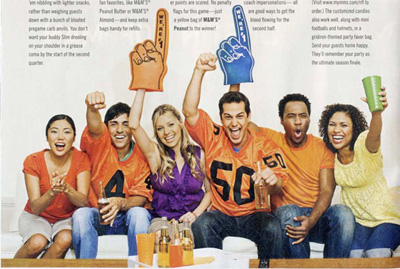Super Bowl Commercials – America’s Annual Festival of Advertising
ADText: Advertising Curriculum
Unit: Super Bowl Commercials – America’s Annual Festival of Advertising

1. Introduction
Every year in mid-winter Americans celebrate a gargantuan cultural ritual. Weeks are spent in preparation for a single afternoon and evening of events that are shared by millions of people of all walks of life. Even many Americans living abroad as expatriates or deployed military take part, synced through technology to the precise timing of these events at home. While neither explicitly religious nor nationalistic in nature, the celebration reverberates with aspects of both. This is, of course, the annual Super Bowl football game.
The Super Bowl encompasses much more than the football game at its center. It is also about the hoopla leading up to it—sportscasters and fans discussing for weeks ahead of time which teams are likely to compete in the game. It is about the halftime show that is a mega pop cultural event on its own. It is about the parties in homes, restaurants, and bars where people gather to watch the game on TV and share the experience. And, not least of all, it is America’s premier advertising event in which advertising professionals showcase some of their most creative work and wealthy corporations tout their brands.
This unit focuses on the Super Bowl as America’s annual festival of advertising. It examines the game’s spectators and the social setting in which they watch it; the making, content, and cost of Super Bowl commercials; the meaning and impact of the commercials; and public and critical assessments as well as the publicity surrounding the ads.
2. Who Watches the Super Bowl?
Watching the Super Bowl is a communal event for most people. It is a time for friends and family to convene, gather around the largest TV screen available, and watch the events together. Watching and partying often begins several hours before kickoff. Televised pre-game shows provide the occasion to start the festivities. The tens of thousands of spectators who watch the game in person pay dearly for that privilege. Tickets cost from several hundred to a few thousand dollars, depending on location and source of acquisition. Millions more fans watch at home, or in special party venues like restaurants and bars. One of every three people in America, somehow, somewhere, watches. Although the Super Bowl is thus primarily a TV event, the newer communications technologies provide other opportunities to view the game, and/or parallel programming.






